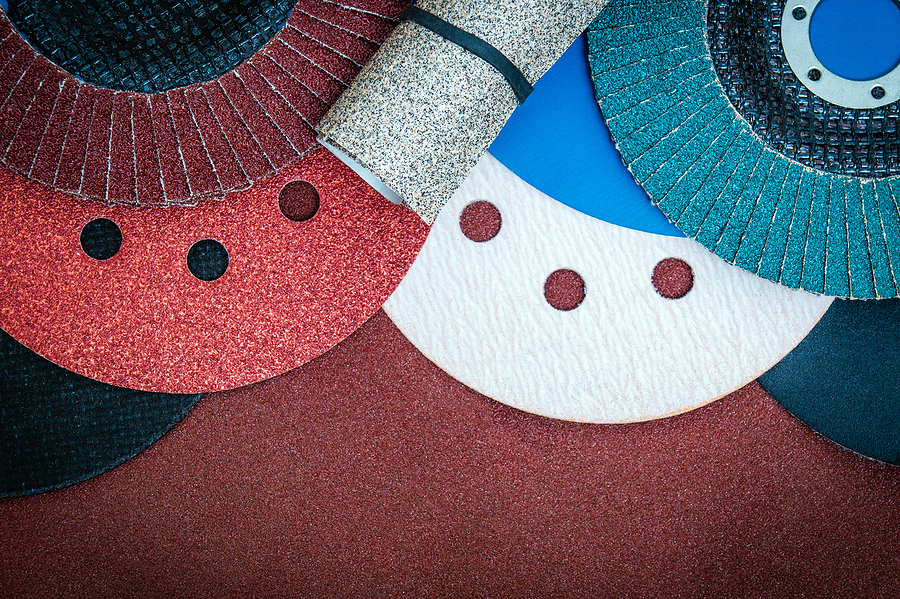Posted by Sandpaper America on May 17th 2024
Unveiling the Science Behind Sandpaper
Sandpaper might seem like a simple tool, but it plays a crucial role in various industries and everyday DIY projects. Whether you're a woodworking enthusiast, a home improvement buff, or just someone looking to smooth out a rough surface, understanding sandpaper's intricacies can significantly enhance your results. In this blog post, we will explore the science behind sandpaper, from its history and grit classifications to the types of abrasives used and techniques for effective sanding. Let's dive in!

Introduction to Sandpaper: A Brief History and Common Applications
Sandpaper has been used for centuries to smooth and finish surfaces. The earliest forms, dating back to the 13th century, were made from crushed shells and seeds glued to parchment. Over time, technological advancements have transformed sandpaper into the versatile and efficient tool we know today.
In modern applications, sandpaper is indispensable in woodworking, metalworking, automotive refinishing, and even in household projects. Its ability to refine surfaces, remove imperfections, and prepare materials for painting or sealing makes it an essential tool in any DIY enthusiast's toolkit.
Choosing the Right Sandpaper Grit for Your Project
One of the most crucial aspects of sandpaper is its grit size, which refers to the size of the abrasive particles on the paper. The grit number indicates the coarseness or fineness of the sandpaper. Choosing the right grit for your project depends on the material you're working with and the desired finish. Coarser grits are best for heavy material removal, while finer grits are ideal for polishing and finishing. Take a look:
- Coarse Grit (40-60): Ideal for removing material quickly, such as stripping paint or smoothing rough wood.
- Medium Grit (80-120): Suitable for general-purpose sanding, including preparing surfaces for finishing.
- Fine Grit (150-180): Used for final sanding before applying finishes.
- Very Fine Grit (220-240): Perfect for delicate sanding between coats of finish.
- Extra Fine Grit (280-320): Used for ultra-smooth finishing touches.
The Physics and Chemistry of Sandpaper
The effectiveness of sandpaper lies in the abrasives used. Different materials have unique properties that make them suitable for specific tasks. The abrasives' hardness, shape, and size determine how effectively they cut and wear down materials. Additionally, the bonding material that holds the abrasives in place and the backing material (paper, cloth, or film) impact the sandpaper's performance and durability. The most common types of abrasives are:
- Aluminum Oxide: Durable and versatile, ideal for wood and metal.
- Silicon Carbide: Harder than aluminum oxide, perfect for sanding harder materials like metal and plastic.
- Garnet: Natural abrasive best suited for woodworking, providing a smooth finish.
- Ceramic: Extremely tough and long-lasting, used for heavy-duty sanding applications.
Sandpaper Recommendations for Different Surfaces
Different surfaces and materials require specific types of sandpaper to achieve the best results:
- Wood: Use aluminum oxide or garnet sandpaper for woodworking projects. Start with a coarse grit to remove rough spots, then progress to finer grits for a smooth finish.
- Metal: Silicon carbide or aluminum oxide sandpaper works well on metal surfaces. Coarse grits can remove rust or paint, while finer grits polish the metal.
- Plastic: Use silicon carbide sandpaper for plastics. Begin with a medium grit to smooth edges, followed by finer grits for a polished finish.
- Glass: For glass, silicon carbide sandpaper is the best choice. Start with a very fine grit to avoid scratching the surface, then use extra fine grits for a flawless finish.
Techniques for Effective Sanding
Achieving the best results with sandpaper requires more than just choosing the right grit and abrasive. Here are some expert tips for effective sanding:
- Apply Even Pressure: Consistent pressure ensures uniform sanding and prevents gouging. Avoid pressing too hard, as it can damage the material.
- Sanding Direction: Always sand with the grain when working with wood to avoid scratches. For other materials, use a circular or back-and-forth motion.
- Use a Sanding Block: A sanding block helps maintain even pressure and prevents your fingers from creating uneven surfaces.
- Change Sandpaper Regularly: Worn-out sandpaper loses its effectiveness. Replace it as soon as you notice a decrease in performance.
- Clean the Surface: Dust and debris can clog the sandpaper, reducing its efficiency. Clean the surface regularly to maintain optimal sanding performance.
Eco-Friendly Options and Alternatives
Choosing Eco-friendly sandpaper options helps minimize your carbon footprint while still achieving excellent results in your projects. For environmentally conscious DIYers, several sustainable sandpaper alternatives are available:
- Biodegradable Sandpaper: Made from natural materials, biodegradable sandpaper breaks down more easily, reducing environmental impact.
- Reusable Sanding Pads: Reusable pads can be washed and used multiple times, reducing waste.
- Water-Based Abrasives: Water-based abrasives use less harmful chemicals in their production, making them a greener choice.
Conclusion
Sandpaper is an essential tool in any DIY enthusiast's arsenal, offering the ability to refine and perfect surfaces across various materials. Understanding the grit size, types of abrasives, and appropriate sanding techniques can significantly enhance your project's outcome. By considering Eco-friendly options, you can also contribute to a more sustainable future. Whether you're a seasoned woodworker or a home improvement hobbyist, mastering the science behind sandpaper will elevate your craftsmanship and ensure your projects are always smooth and polished.
Are you looking for high-quality sandpaper materials and supplies for your home improvement toolkit? Contact Sandpaper America at 1-800-860-7263 (SAND) to order from a wide variety of sandpaper products for woodworking and home improvement in Indiana. Call to place an over-the-phone order or go online and buy directly from our website!
Related Posts:
A
Comprehensive Comparison: Different Types of Sanding Sheets and Their Uses
The
Essential Guide to Choosing and Using Sandpaper
The
Common Kinds of Sanding Paper

